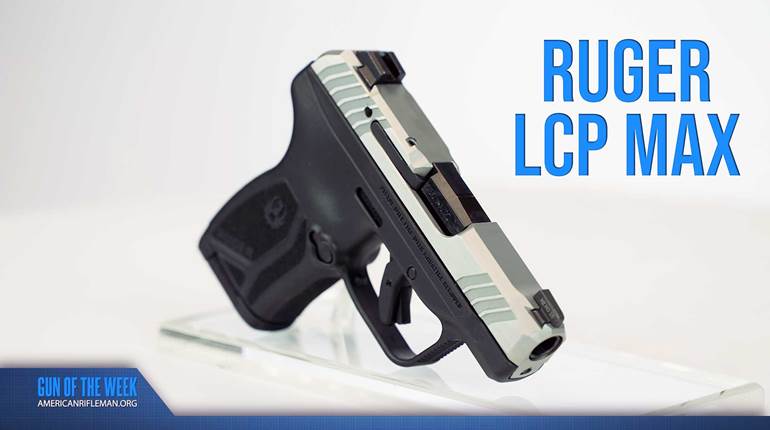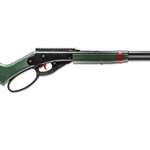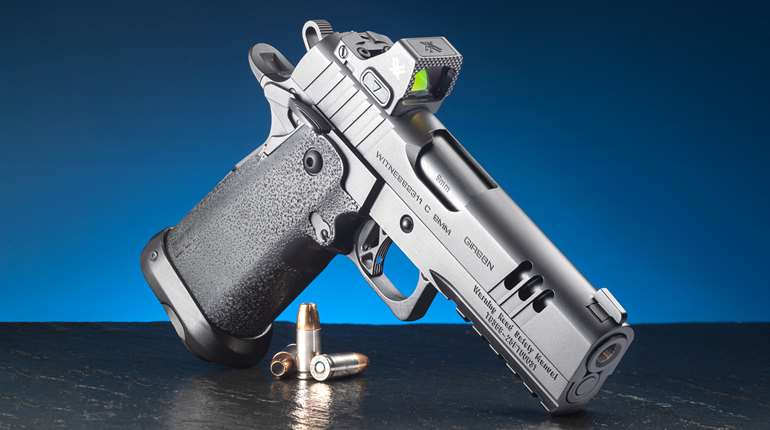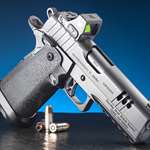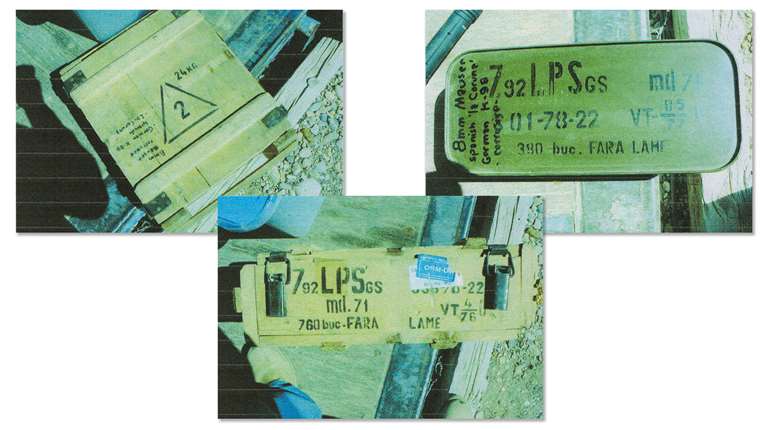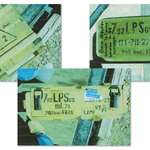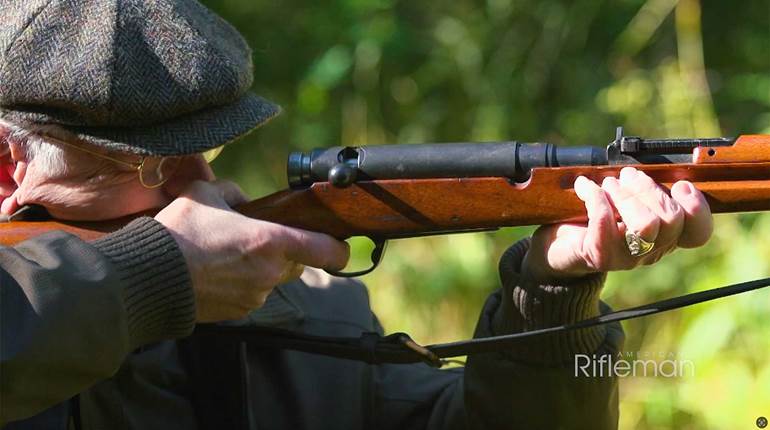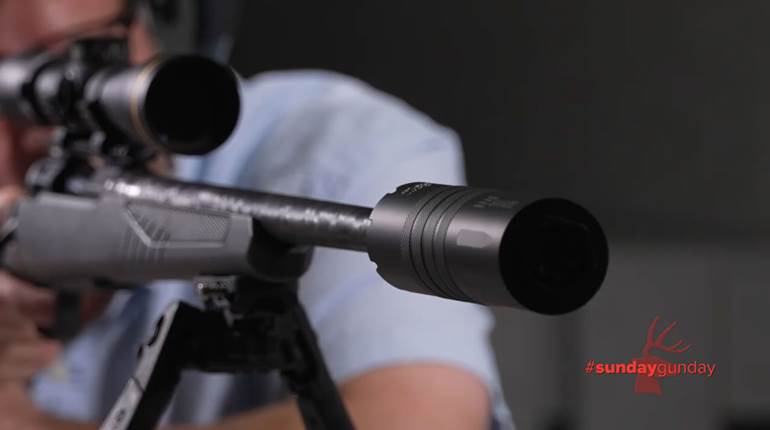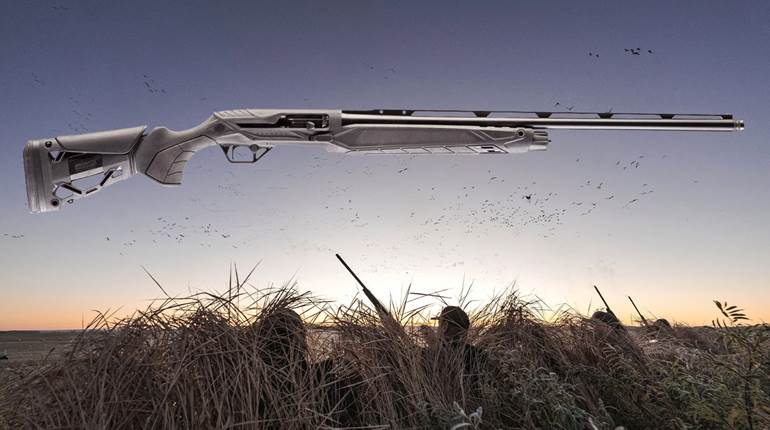First introduced in 1873, the Colt Single Action Army has officially been around for 150 years. In that time, it has become one of the iconic revolvers of the late 19th century, and it remains one of the most popular and widely known firearm designs ever produced. In the "American Rifleman Television" feature above, we outline the history and design of the Single Action Army and assess its journey through a century and a half of existence.
"The Colt Single Action Army revolver, the SAA or Model P. The Peacemaker. How many monikers, sobriquets, can one gun have? But that gun's got them," said Phil Schreier, director, NRA Museums. "And the reason is because it's just that cool. It came out in 1873. It wasn't the first centerfire, you know, revolver with the self-contained metallic cartridge of Colt's. But it was, after a very short lead time, it was the epitome of the refinement of such a thing. And it really is a gorgeous gun."

The road to the Single Action Army, though, was fraught with delays. Despite Colt's significant presence in the revolver market, the Rollin White patent of April 1855 prevented any company other than Smith & Wesson from capitalizing on the central design component of the patent, which involved the use of a bored-through cylinder that allowed for the insertion of a self-contained metallic cartridge. However, in 1869, the patent expired, giving Colt the ability to use the design to its own advantage.
"So Colt tasks two of its employees, Charles Richards and William Mason, to finally take the Colt revolver to this next step of evolution. But the Army hated this open top revolver," American Rifleman Executive Editor Evan Brune said. "So Colt went back to the drawing board and tasked its two employees, Richards and Mason, with developing an improved version of its New Model Holster Revolver. And what they came back with was what ultimately became the Colt Single Action Army."

As initially designed, the Colt Single Action Army shared much in common with several previous Colt designs, notably in its firing mechanism. With the strengthened frame and top strap, it could handle a much more powerful self-contained cartridge in the .45 Colt, and it had a six-shot cylinder, along with a 7.5" barrel.
"First of all, it's a simple gun. It basically uses the lock work of the, you know, Dragoons and '51 Navys and '60 Armys," American Rifleman Field Editor Garry James said. "It didn't change much, which it's a very simple and reliable action. The gun, with that plow handle grip, it just fits in your hand beautifully. They're natural pointers, whether they have the fancy flattop rear sights or not. You can get them in any caliber you want."
Despite the similarities, there were some notable improvements. Instead of having its components held together by a wedge, like in the Model 1860 Army, the barrel was screwed into the solid frame, and the cylinder was held in by a base pin that could easily be removed. The solid-frame design necessitated a right-side loading gate, and spent cartridges were removed via a spring-loaded ejector rod housed on the lower right portion of the barrel.

"This was a gun that, you know, it had a cylinder base pin, so it could be disassembled easily. It was chambered for the .45 Colt cartridge, which Colt had developed with Union Metallic Cartridge specifically for this gun," Brune said. "And that's a cartridge that continues to live on today through the .45 ACP because the original loading for the .45 Colt was replicated in the shorter case of the .45 ACP, which is, you got a 230 grain bullet going about 850 feet per second. That was what the Colt .45 was designed to do in the 1870s."
Despite its strength and popularity, the development of double-action revolvers and swing-out cylinders made other designs popular, and as the 20th century developed, sales of the Colt Single Action Army dwindled.
"Really, if it wasn't for the resurgence of the Western on television, there might not have been a resurgence of the actual Colt Single Action Army because the Colt had been taken out of production in 1941," James said. "A, because of the war, and B, basically, because of tepid sales. So when all of a sudden they started using single actions in these TV shows, there became a renewed demand for them. And they started remaking the guns again."

These Colt revolvers produced after World War II became known as "second generation" Single Action Armys, and they were made until the mid-1970s. Colt developed new tooling and soon resumed production, and guns produced on the new tooling are known as "third generation" Colts, which are still being produced today.
"I think that's what's kind of amazing about the Colt Single Action Army is, here you have a gun that was introduced 150 years ago, and you can still go to the same company that made it 150 years ago and buy the same gun," Brune said.
To watch complete segments of past episodes of American Rifleman TV, go to americanrifleman.org/artv. For all-new episodes of ARTV, tune in Wednesday nights to Outdoor Channel 8:30 p.m. and 11:30 p.m. EST.
